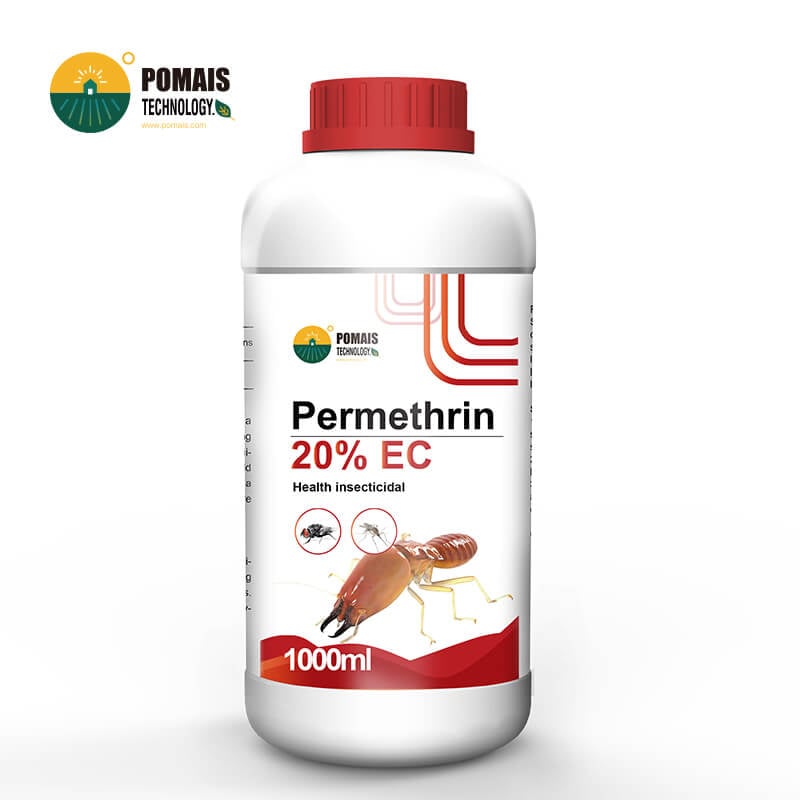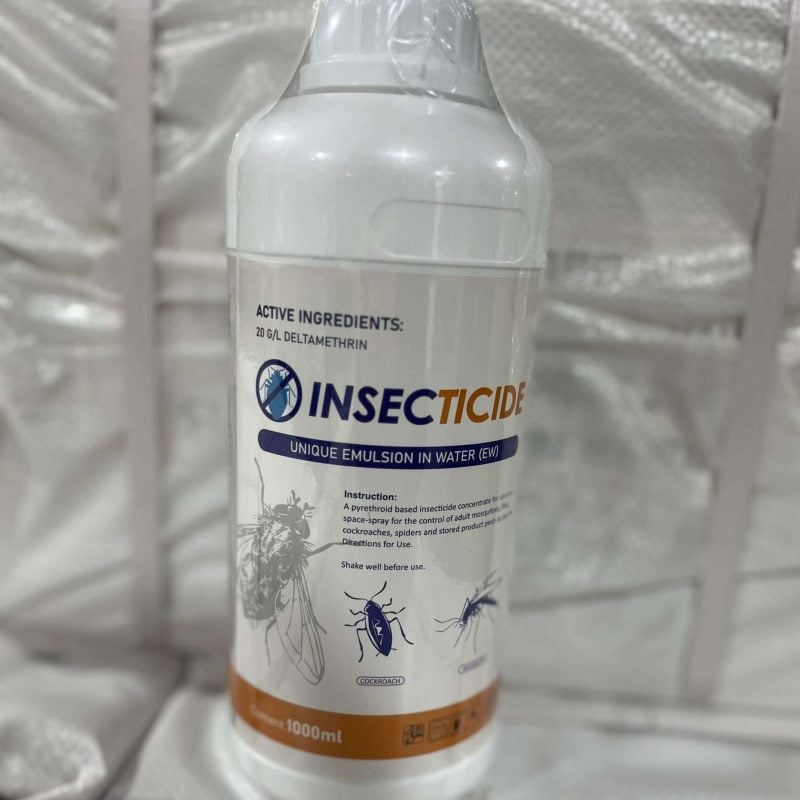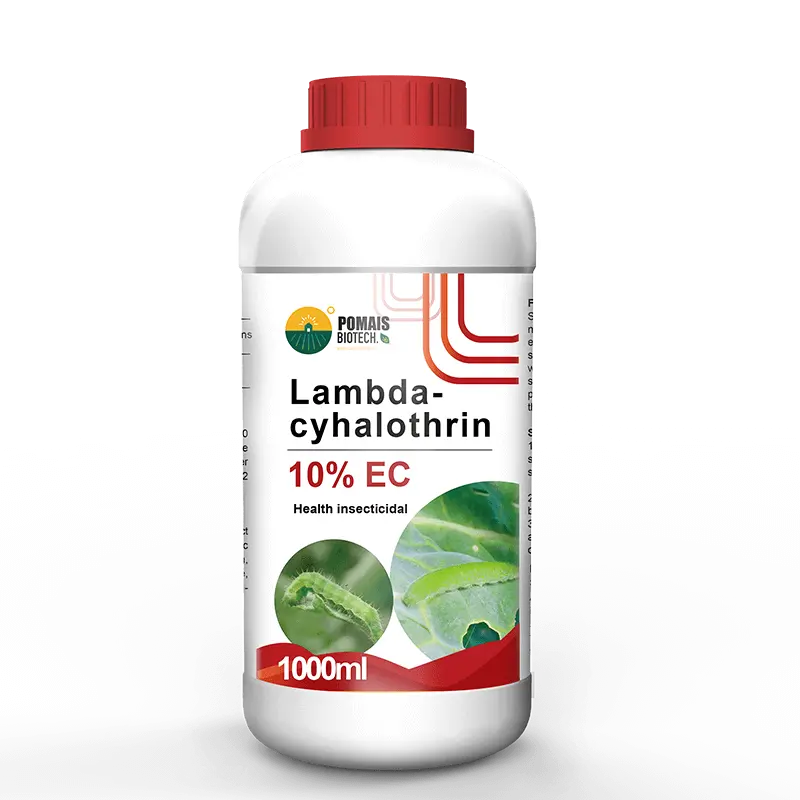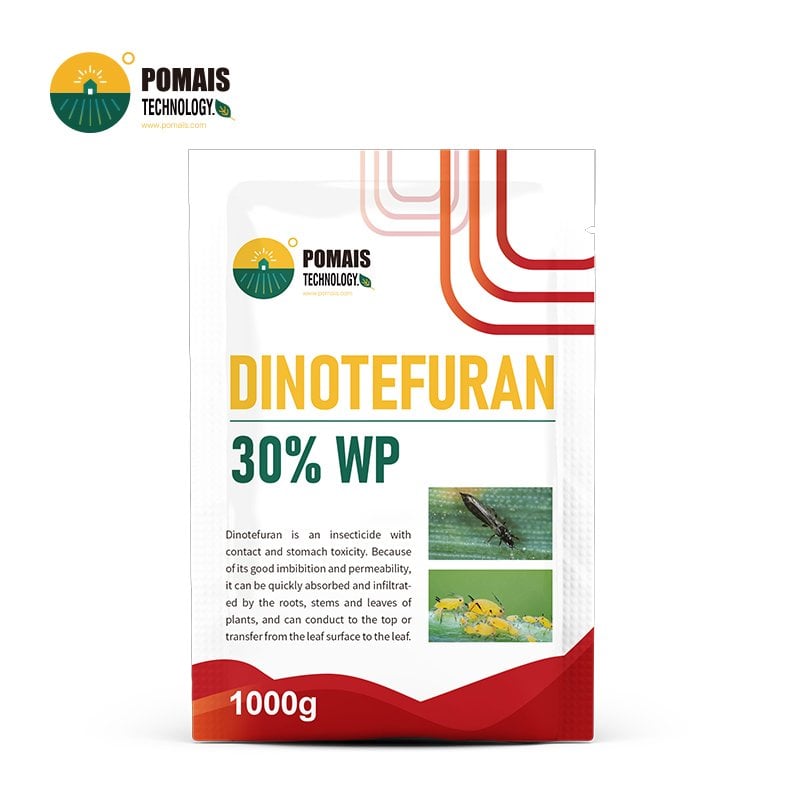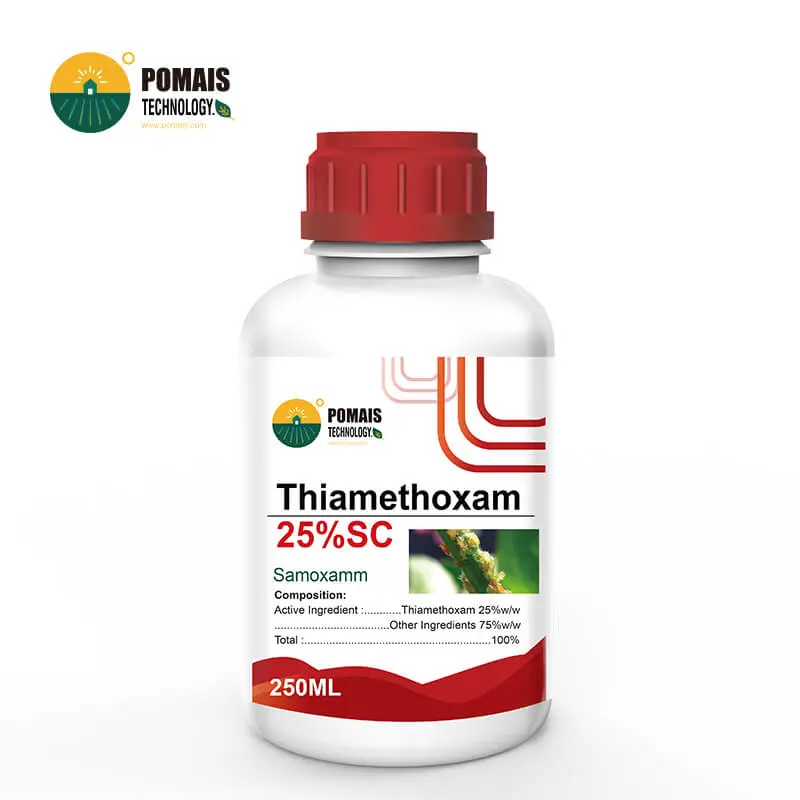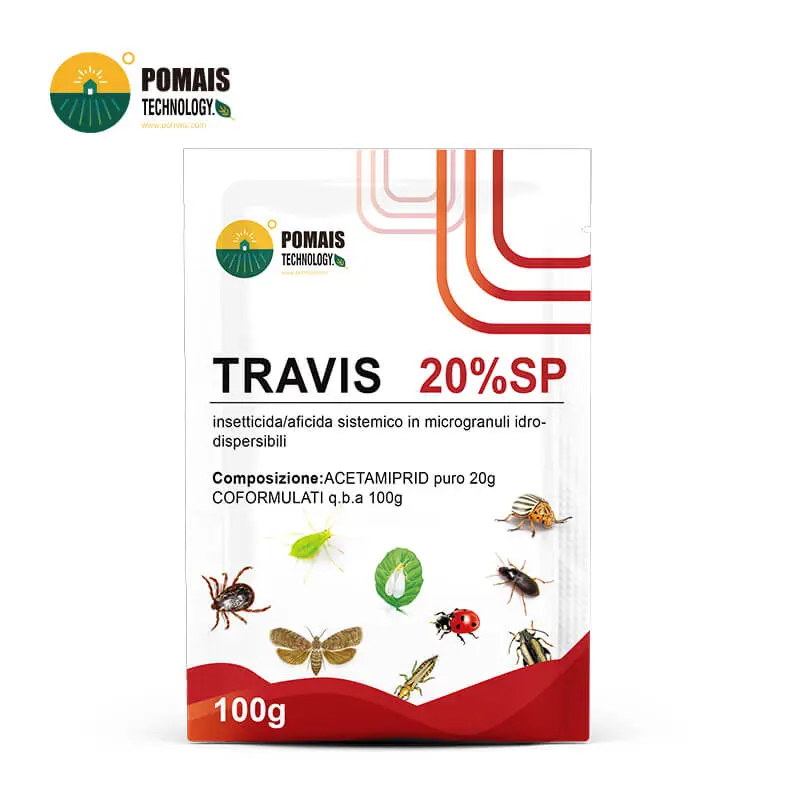Leaffooted Bug Control: Insecticide Solutions for Orchard and Field Protection
Why Leaffooted Bugs Require Immediate Chemical Control
If you’re managing high-value crops such as pomegranates, almonds, pistachios, or tomatoes, leaffooted bugs represent a direct and increasing threat to your yield and fruit quality. These piercing-sucking insects—especially Leptoglossus zonatus—can cause internal fruit collapse, nut abortion, and visible feeding scars that reduce market value or trigger shipment rejection.
What makes leaffooted bugs particularly dangerous is their seasonal mobility, long adult lifespan, and overlapping generations, which allow them to sustain pressure on crops from early fruit set until harvest. Outbreaks often spike after mild winters, when overwintering adults survive in large numbers and migrate rapidly into fields and orchards in spring.
Unlike minor cosmetic pests, leaffooted bugs directly impact kernel viability and seed development. In tree nuts, early-season feeding results in shriveled or aborted kernels, while in fruiting vegetables like tomatoes or pomegranates, feeding leads to discoloration, deformation, and postharvest decay. When left unmanaged, infestations can lead to significant economic loss across multiple hectares.
Biological controls and physical removal methods often fall short, especially during periods of high pest density or when multiple life stages are present. For commercial growers and pesticide distributors, the most effective response is an integrated chemical control program using fast-acting, residual, or systemic insecticides—applied at the correct time and rate.
In the following sections, you’ll learn how to identify leaffooted bugs, understand their life cycle, assess crop risks, and apply the most suitable insecticide solutions available from POMAIS to restore crop health and protect your bottom line.
Pest Identification and Monitoring Essentials
Accurate identification is the first step in launching an effective insecticide-based control program. Leaffooted bugs (family Coreidae) are medium to large insects with distinct physical features that set them apart from other piercing-sucking pests. Most commonly, infestations in agricultural systems are caused by three species: Leptoglossus zonatus, L. clypealis, and L. occidentalis.
Key Identification Traits:
- Size and Shape: Adults measure approximately 19–25 mm long, with a narrow, elongated body and long legs.
- Color: Generally brown to reddish-brown in color.
- Wings: All species feature a white zigzag line across their folded wings—prominent in L. zonatus and L. clypealis.
- Hind Legs: Characteristically leaf-shaped expansions on the hind tibia give the bug its name.
- Species-Specific Features:
- L. zonatus: Two distinct yellow spots behind the head (pronotum).
- L. clypealis: Has a sharp forward-pointing horn (clypeus).
- L. occidentalis: Lacks both yellow spots and horn.
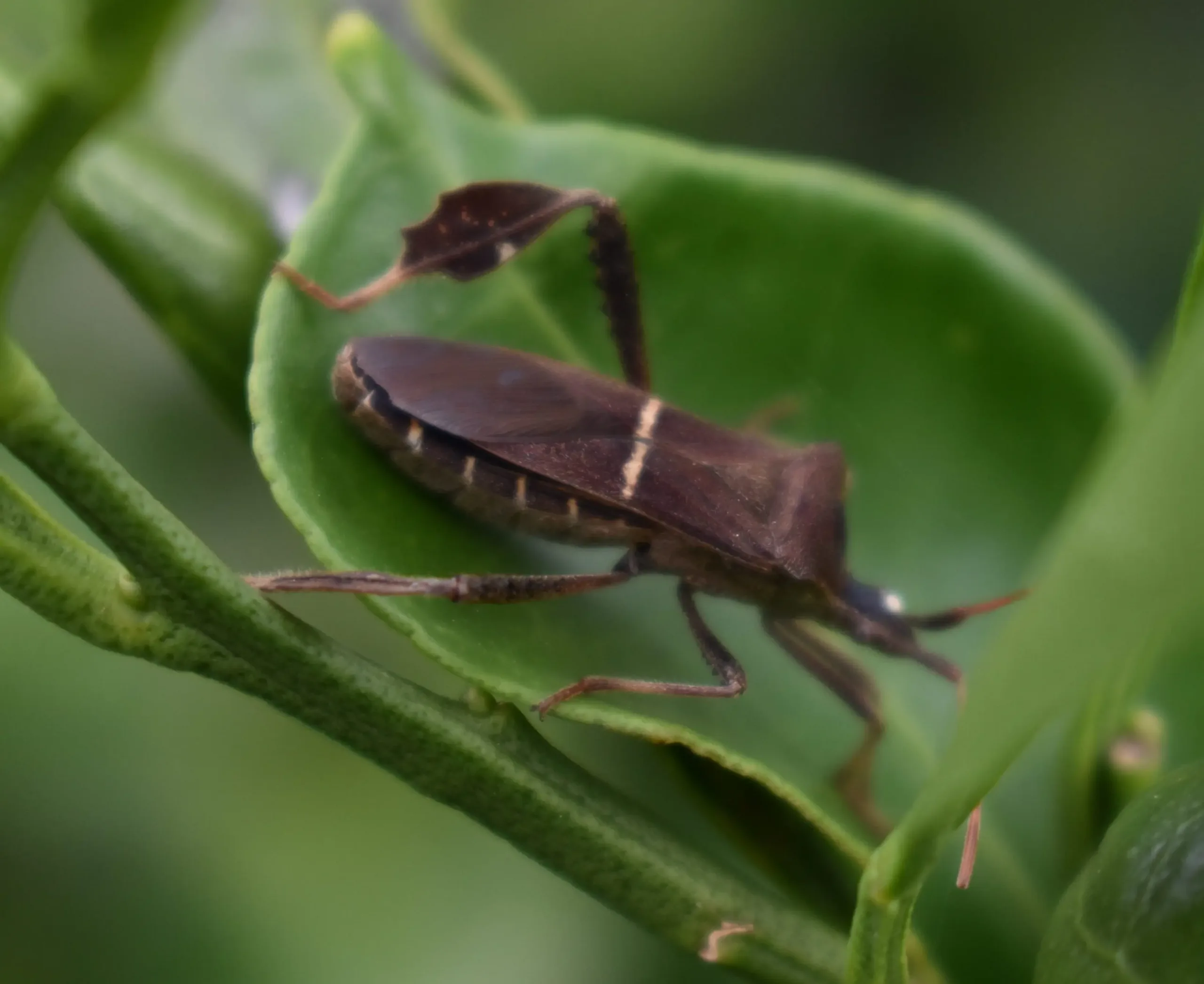
Egg and Nymph Stages:
- Eggs: Brown, cylindrical, laid in long end-to-end strands along stems or midribs of leaves. A single mass can contain 10–15 eggs or more.
- Nymphs: Bright orange to reddish-brown with black legs and antennae. Younger nymphs are often clustered, making early detection possible. As they develop, the leaf-like tibia becomes more visible.
Scouting and Monitoring Tips:
- Begin monitoring in early spring, particularly in orchards and adjacent weedy areas.
- Inspect:
- Leaf undersides for egg strands
- Early fruit for small punctures or discoloration
- Dense foliage and fruit clusters where bugs may hide
- Early detection is critical—targeting nymphs with insecticides is far more effective than attempting to eliminate mobile adults.
At POMAIS, we recommend pairing field scouting with proactive spray scheduling based on pest stage and density. Our technical team can assist you in creating a monitoring-based application program tailored to your crop, region, and pest cycle.
Life Cycle and Infestation Timing
Understanding the life cycle of leaffooted bugs is essential for timing your insecticide applications effectively. These pests are long-lived, multigenerational, and highly mobile, making control more difficult if treatments are delayed or poorly targeted.
Overwintering and Spring Emergence
- Leaffooted bugs overwinter as adults in sheltered areas such as barns, woodpiles, citrus trees, palm fronds, or cracks in tree bark.
- In regions like California’s Central Valley, adults emerge as early as March or April, depending on temperature.
- These overwintered adults immediately begin feeding on early weed seeds and then migrate into orchards and gardens as fruits begin to develop.
Reproduction and Population Build-Up
- Each female can lay over 200 eggs in a 6–8 week span.
- Eggs hatch in about 7 days, and nymphs develop into adults in 5 to 8 weeks, depending on temperature.
- During the growing season, 2 to 3 overlapping generations can occur, meaning all life stages—eggs, nymphs, and adults—may be present by mid to late summer.
Pest Pressure Peaks
- Population spikes typically occur from May to September, with pressure highest in warm, dry years following mild winters.
- Young nymphs are the most vulnerable stage and should be the primary target of insecticide applications.
- Adults are mobile and harder to kill, often requiring fast-acting contact insecticides or repeated applications if treatment is delayed.
Key Spray Timing Windows:
| Pest Stage | Recommended Action |
|---|---|
| Overwintered Adults | Perimeter sprays with contact insecticides |
| Egg to Early Nymph | Systemic or translaminar insecticides for deep reach |
| Peak Nymph Density | Combination or rotation products to prevent buildup |
| Pre-Harvest Adult Influx | Short-PHI contact products or botanical alternates |
With POMAIS’s broad-spectrum, fast-acting, and systemic formulations, you can confidently protect your crop throughout the critical phases of the leaffooted bug’s lifecycle. Our product line supports rotational and residual control strategies to match every pest stage and crop requirement.
Crop Damage and Economic Risks
Leaffooted bugs are not superficial feeders. Their piercing-sucking mouthparts cause deep internal damage that compromises both yield and commercial quality across a wide range of high-value crops. If left unmanaged, infestations can lead to fruit rejection, nut kernel loss, and serious economic setbacks.
Damage by Crop Type
| Crop Type | Observed Damage |
|---|---|
| Pomegranate | Internal seed (aril) darkening and shriveling; no external sign until harvest |
| Almonds & Pistachios | Early-season feeding causes aborted kernels; late-season feeding leads to black staining |
| Tomatoes | Surface discoloration, dimpling, or aborted fruit due to feeding on green fruit |
| Citrus (young fruit) | Superficial pitting, premature drop, reduced market quality |
| Watermelons & Melons | Feeding scars, rind blemishes, and reduced storage life |
| Cotton | Feeding on immature bolls reduces fiber quality and boll retention |
Secondary Effects
| Impact Area | Effect |
|---|---|
| Aesthetic Value | Bug feces and feeding punctures lower market grade |
| Pathogen Entry Points | Feeding wounds invite fungal infection and spoilage |
| Post-Harvest Loss | Affected fruit and nuts often show internal damage after shipping |
| Labor Costs | Increased time spent grading and sorting damaged produce |
Risk Factors
| Condition | Increased Risk |
|---|---|
| Mild winters | Higher overwinter survival and spring adult migration |
| Proximity to weedy borders | Early-season adult buildup and movement into cash crops |
| Late-season fruit maturity | Bugs concentrate on ripening crops; physical control less effective |
| Lack of preventive spraying | Overlapping generations make late control harder and costlier |
The only reliable way to prevent yield loss and protect fruit integrity is through the timely use of proven insecticides—especially during early infestation stages. At POMAIS, we provide crop-specific solutions to control both early nymphs and late-season adults, with pre-harvest safe options available for sensitive markets.
Recommended Insecticide Solutions from POMAIS
At POMAIS, we offer a professional line of insecticides formulated to provide fast knockdown, deep systemic control, and long-lasting protection against leaffooted bug infestations. Whether you’re managing nuts, fruits, or vegetables, our portfolio delivers flexible solutions for both preventive programs and outbreak responses.
1. Pyrethroid-Based Contact Insecticides
For immediate control of mobile adults and dense field populations
Active Ingredients:
Formulations: EC (Emulsifiable Concentrate), SC (Suspension Concentrate)
Key Features:
- Rapid knockdown of adults upon contact
- Ideal for early-season perimeter spraying
- Compatible with tank-mix programs
Best For:
- Border treatments
- High adult migration periods (spring/fall)
- Pomegranate, almond, and cotton fields
2. Systemic and Translaminar Insecticides
For controlling nymphs hidden inside canopy and under foliage
Active Ingredients:
Formulations: SL (Soluble Liquid), WG (Water-Dispersible Granule)
Key Features:
- Long residual activity
- Effective against nymphs on leaf undersides and dense clusters
- Soil and foliar application options available
Best For:
- Mid-season protection
- Vegetable crops (e.g., tomatoes, melons), citrus, and pistachios
- Fields with overlapping pest stages
3. Combination and Resistance Management Products
Dual-action for enhanced control and rotation strategy
Formulation Examples:
- Imidacloprid + Lambda-cyhalothrin
- Acetamiprid + Pyriproxyfen
Formulations: EC, SC, ME (Microemulsion)
Key Features:
- Simultaneous control of nymphs and adults
- Useful in fields with existing resistance issues
- Reduces repeat spray frequency
Best For:
- High pest pressure
- End-of-season cleanout sprays
- Export-quality fruit production
4. OEM Customization and Supply Support
All products are available with:
- OEM/private label support
- Custom bottle sizes (100 mL to 20 L)
- MSDS, COA, and registration dossiers
- Multilingual label printing and regulatory adaptation
With our ISO-certified production, strict QC system, and efficient global logistics, POMAIS ensures your supply remains consistent, compliant, and competitive.
Application Guidelines and Best Practices
To achieve the best possible results when controlling leaffooted bugs, it’s critical to apply insecticides at the correct timing, with the appropriate dosage, and using proper techniques. POMAIS provides professional-grade formulations—but their full potential is only realized through field-proven application strategies.
1. Timing Based on Pest Stage
| Pest Stage | Recommended Action |
|---|---|
| Overwintered adults | Early-season contact sprays near orchard borders and weedy field edges |
| Egg to 2nd instar nymphs | Systemic or translaminar sprays for high penetration and residual action |
| Mid-to-late nymph stages | Rotate contact + systemic insecticides for complete coverage |
| Pre-harvest adults | Short-PHI contact insecticides or botanical alternates if needed |
Tip: Use monitoring and egg mass scouting to time initial applications more precisely. Early control of nymph clusters greatly reduces long-term pest buildup.
2. Coverage and Equipment
- Use high-pressure sprayers (600–800 psi) or mist blowers to ensure penetration into tree canopies and fruit clusters.
- Focus coverage on:
- Leaf undersides
- Fruit attachment points
- Inner canopy zones
- Use angle-adjustable nozzles for better foliage coverage.
3. Mixing and Compatibility
- Mix POMAIS products with clean, pH-neutral water.
- Always read labels carefully to confirm compatibility when tank mixing different active ingredients or adjuvants.
- Non-ionic surfactants are recommended with SC or SL formulations to enhance coverage and adherence.
4. Rotation Strategy
- To prevent resistance buildup:
- Rotate between IRAC groups (e.g., 3A, 4A, 23).
- Avoid repeating the same mode of action across consecutive sprays in a single season.
- Use combination products to simplify this rotation while ensuring dual-stage pest control.
5. Safety and Pre-Harvest Interval (PHI)
- Wear full PPE including gloves, goggles, and respirators as required by the label.
- Follow label-stated PHIs, especially when spraying on crops close to harvest.
- Avoid spraying during intense sunlight or high winds to prevent drift or phytotoxicity.
By combining POMAIS’s targeted insecticides with these application practices, you can significantly reduce pest pressure, avoid crop damage, and maintain product quality throughout the growing season. Our technical team can assist in tailoring a spray schedule for your crops, climate, and pest conditions.
POMAIS: Your Supplier for Leaffooted Bug Insecticides
When it comes to protecting your crops from the destructive impact of leaffooted bugs, you need more than just a product—you need a reliable partner who understands your field realities, regulatory landscape, and commercial goals. At POMAIS Agriculture, we do more than manufacture insecticides. We support distributors, retailers, and growers with complete pest control solutions backed by science, service, and global delivery experience.
Why Choose POMAIS?
- Full Product Line for Whitefly and Leaffooted Bug Control
We offer both single-active and combination formulations to match different crop needs, pest stages, and resistance pressures. - OEM & ODM Capabilities
Customize your own brand with:- Bottle types and volumes (100 mL–20 L)
- Private label design in multiple languages
- Country-specific compliance formatting
- Regulatory & Technical Support
We provide:- MSDS, COA, and product specification sheets
- Assistance with local product registration and dossier preparation
- Technical application guides for your sales and agronomy teams
- Global Export Logistics
With established logistics partners and efficient loading timelines, we ensure on-time container shipments and consistent quality control, even during peak seasons. - Stable Formulation and Packaging Quality
All products are manufactured in ISO-certified factories, with strict raw material screening and batch QC processes to guarantee stability and field performance. - Market Coverage
We work with long-term partners in:- Middle East
- South America
- Africa
- Russia and Central Asia
Whether you are building a national distribution network or supplying niche crops with specific pest challenges, POMAIS delivers flexible manufacturing, professional support, and a reliable product supply chain—all designed to strengthen your competitive position.
Start Your Leaffooted Bug Control Program with Confidence
If your orchards, fields, or clients are at risk of leaffooted bug damage, now is the time to take proactive steps with a proven insecticide strategy backed by technical precision and commercial reliability.
At POMAIS Agriculture, we are ready to support you with:
- Product recommendations based on your crop type, pest pressure, and climate conditions
- Free sample support for field evaluation or registration trials
- Custom label design and packaging options for private brands
- Technical documentation including MSDS, COA, TDS, and regulatory files
- Fast and secure global shipping, including full-container and mixed-load deliveries
Whether you’re a national distributor, regional importer, or large-scale grower, you can rely on POMAIS to deliver field-proven insecticide formulations, professional guidance, and dependable supply—tailored to your market.
Get in touch with our export team today to request a quotation, discuss OEM opportunities, or build a full leaffooted bug control program customized for your business.
Why Leaffooted Bugs Require Immediate Chemical Control
If you’re managing high-value crops such as pomegranates, almonds, pistachios, or tomatoes, leaffooted bugs represent a direct and increasing threat to your yield and fruit quality. These piercing-sucking insects—especially Leptoglossus zonatus—can cause internal fruit collapse, nut abortion, and visible feeding scars that reduce market value or trigger shipment rejection.
What makes leaffooted bugs particularly dangerous is their seasonal mobility, long adult lifespan, and overlapping generations, which allow them to sustain pressure on crops from early fruit set until harvest. Outbreaks often spike after mild winters, when overwintering adults survive in large numbers and migrate rapidly into fields and orchards in spring.
Unlike minor cosmetic pests, leaffooted bugs directly impact kernel viability and seed development. In tree nuts, early-season feeding results in shriveled or aborted kernels, while in fruiting vegetables like tomatoes or pomegranates, feeding leads to discoloration, deformation, and postharvest decay. When left unmanaged, infestations can lead to significant economic loss across multiple hectares.
Biological controls and physical removal methods often fall short, especially during periods of high pest density or when multiple life stages are present. For commercial growers and pesticide distributors, the most effective response is an integrated chemical control program using fast-acting, residual, or systemic insecticides—applied at the correct time and rate.
In the following sections, you’ll learn how to identify leaffooted bugs, understand their life cycle, assess crop risks, and apply the most suitable insecticide solutions available from POMAIS to restore crop health and protect your bottom line.
Pest Identification and Monitoring Essentials
Accurate identification is the first step in launching an effective insecticide-based control program. Leaffooted bugs (family Coreidae) are medium to large insects with distinct physical features that set them apart from other piercing-sucking pests. Most commonly, infestations in agricultural systems are caused by three species: Leptoglossus zonatus, L. clypealis, and L. occidentalis.
Key Identification Traits:
- Size and Shape: Adults measure approximately 19–25 mm long, with a narrow, elongated body and long legs.
- Color: Generally brown to reddish-brown in color.
- Wings: All species feature a white zigzag line across their folded wings—prominent in L. zonatus and L. clypealis.
- Hind Legs: Characteristically leaf-shaped expansions on the hind tibia give the bug its name.
- Species-Specific Features:
- L. zonatus: Two distinct yellow spots behind the head (pronotum).
- L. clypealis: Has a sharp forward-pointing horn (clypeus).
- L. occidentalis: Lacks both yellow spots and horn.

Egg and Nymph Stages:
- Eggs: Brown, cylindrical, laid in long end-to-end strands along stems or midribs of leaves. A single mass can contain 10–15 eggs or more.
- Nymphs: Bright orange to reddish-brown with black legs and antennae. Younger nymphs are often clustered, making early detection possible. As they develop, the leaf-like tibia becomes more visible.
Scouting and Monitoring Tips:
- Begin monitoring in early spring, particularly in orchards and adjacent weedy areas.
- Inspect:
- Leaf undersides for egg strands
- Early fruit for small punctures or discoloration
- Dense foliage and fruit clusters where bugs may hide
- Early detection is critical—targeting nymphs with insecticides is far more effective than attempting to eliminate mobile adults.
At POMAIS, we recommend pairing field scouting with proactive spray scheduling based on pest stage and density. Our technical team can assist you in creating a monitoring-based application program tailored to your crop, region, and pest cycle.
Life Cycle and Infestation Timing
Understanding the life cycle of leaffooted bugs is essential for timing your insecticide applications effectively. These pests are long-lived, multigenerational, and highly mobile, making control more difficult if treatments are delayed or poorly targeted.
Overwintering and Spring Emergence
- Leaffooted bugs overwinter as adults in sheltered areas such as barns, woodpiles, citrus trees, palm fronds, or cracks in tree bark.
- In regions like California’s Central Valley, adults emerge as early as March or April, depending on temperature.
- These overwintered adults immediately begin feeding on early weed seeds and then migrate into orchards and gardens as fruits begin to develop.
Reproduction and Population Build-Up
- Each female can lay over 200 eggs in a 6–8 week span.
- Eggs hatch in about 7 days, and nymphs develop into adults in 5 to 8 weeks, depending on temperature.
- During the growing season, 2 to 3 overlapping generations can occur, meaning all life stages—eggs, nymphs, and adults—may be present by mid to late summer.
Pest Pressure Peaks
- Population spikes typically occur from May to September, with pressure highest in warm, dry years following mild winters.
- Young nymphs are the most vulnerable stage and should be the primary target of insecticide applications.
- Adults are mobile and harder to kill, often requiring fast-acting contact insecticides or repeated applications if treatment is delayed.
Key Spray Timing Windows:
| Pest Stage | Recommended Action |
|---|---|
| Overwintered Adults | Perimeter sprays with contact insecticides |
| Egg to Early Nymph | Systemic or translaminar insecticides for deep reach |
| Peak Nymph Density | Combination or rotation products to prevent buildup |
| Pre-Harvest Adult Influx | Short-PHI contact products or botanical alternates |
With POMAIS’s broad-spectrum, fast-acting, and systemic formulations, you can confidently protect your crop throughout the critical phases of the leaffooted bug’s lifecycle. Our product line supports rotational and residual control strategies to match every pest stage and crop requirement.
Crop Damage and Economic Risks
Leaffooted bugs are not superficial feeders. Their piercing-sucking mouthparts cause deep internal damage that compromises both yield and commercial quality across a wide range of high-value crops. If left unmanaged, infestations can lead to fruit rejection, nut kernel loss, and serious economic setbacks.
Damage by Crop Type
| Crop Type | Observed Damage |
|---|---|
| Pomegranate | Internal seed (aril) darkening and shriveling; no external sign until harvest |
| Almonds & Pistachios | Early-season feeding causes aborted kernels; late-season feeding leads to black staining |
| Tomatoes | Surface discoloration, dimpling, or aborted fruit due to feeding on green fruit |
| Citrus (young fruit) | Superficial pitting, premature drop, reduced market quality |
| Watermelons & Melons | Feeding scars, rind blemishes, and reduced storage life |
| Cotton | Feeding on immature bolls reduces fiber quality and boll retention |
Secondary Effects
| Impact Area | Effect |
|---|---|
| Aesthetic Value | Bug feces and feeding punctures lower market grade |
| Pathogen Entry Points | Feeding wounds invite fungal infection and spoilage |
| Post-Harvest Loss | Affected fruit and nuts often show internal damage after shipping |
| Labor Costs | Increased time spent grading and sorting damaged produce |
Risk Factors
| Condition | Increased Risk |
|---|---|
| Mild winters | Higher overwinter survival and spring adult migration |
| Proximity to weedy borders | Early-season adult buildup and movement into cash crops |
| Late-season fruit maturity | Bugs concentrate on ripening crops; physical control less effective |
| Lack of preventive spraying | Overlapping generations make late control harder and costlier |
The only reliable way to prevent yield loss and protect fruit integrity is through the timely use of proven insecticides—especially during early infestation stages. At POMAIS, we provide crop-specific solutions to control both early nymphs and late-season adults, with pre-harvest safe options available for sensitive markets.
Recommended Insecticide Solutions from POMAIS
At POMAIS, we offer a professional line of insecticides formulated to provide fast knockdown, deep systemic control, and long-lasting protection against leaffooted bug infestations. Whether you’re managing nuts, fruits, or vegetables, our portfolio delivers flexible solutions for both preventive programs and outbreak responses.
1. Pyrethroid-Based Contact Insecticides
For immediate control of mobile adults and dense field populations
Active Ingredients:
Formulations: EC (Emulsifiable Concentrate), SC (Suspension Concentrate)
Key Features:
- Rapid knockdown of adults upon contact
- Ideal for early-season perimeter spraying
- Compatible with tank-mix programs
Best For:
- Border treatments
- High adult migration periods (spring/fall)
- Pomegranate, almond, and cotton fields
2. Systemic and Translaminar Insecticides
For controlling nymphs hidden inside canopy and under foliage
Active Ingredients:
Formulations: SL (Soluble Liquid), WG (Water-Dispersible Granule)
Key Features:
- Long residual activity
- Effective against nymphs on leaf undersides and dense clusters
- Soil and foliar application options available
Best For:
- Mid-season protection
- Vegetable crops (e.g., tomatoes, melons), citrus, and pistachios
- Fields with overlapping pest stages
3. Combination and Resistance Management Products
Dual-action for enhanced control and rotation strategy
Formulation Examples:
- Imidacloprid + Lambda-cyhalothrin
- Acetamiprid + Pyriproxyfen
Formulations: EC, SC, ME (Microemulsion)
Key Features:
- Simultaneous control of nymphs and adults
- Useful in fields with existing resistance issues
- Reduces repeat spray frequency
Best For:
- High pest pressure
- End-of-season cleanout sprays
- Export-quality fruit production
4. OEM Customization and Supply Support
All products are available with:
- OEM/private label support
- Custom bottle sizes (100 mL to 20 L)
- MSDS, COA, and registration dossiers
- Multilingual label printing and regulatory adaptation
With our ISO-certified production, strict QC system, and efficient global logistics, POMAIS ensures your supply remains consistent, compliant, and competitive.
Application Guidelines and Best Practices
To achieve the best possible results when controlling leaffooted bugs, it’s critical to apply insecticides at the correct timing, with the appropriate dosage, and using proper techniques. POMAIS provides professional-grade formulations—but their full potential is only realized through field-proven application strategies.
1. Timing Based on Pest Stage
| Pest Stage | Recommended Action |
|---|---|
| Overwintered adults | Early-season contact sprays near orchard borders and weedy field edges |
| Egg to 2nd instar nymphs | Systemic or translaminar sprays for high penetration and residual action |
| Mid-to-late nymph stages | Rotate contact + systemic insecticides for complete coverage |
| Pre-harvest adults | Short-PHI contact insecticides or botanical alternates if needed |
Tip: Use monitoring and egg mass scouting to time initial applications more precisely. Early control of nymph clusters greatly reduces long-term pest buildup.
2. Coverage and Equipment
- Use high-pressure sprayers (600–800 psi) or mist blowers to ensure penetration into tree canopies and fruit clusters.
- Focus coverage on:
- Leaf undersides
- Fruit attachment points
- Inner canopy zones
- Use angle-adjustable nozzles for better foliage coverage.
3. Mixing and Compatibility
- Mix POMAIS products with clean, pH-neutral water.
- Always read labels carefully to confirm compatibility when tank mixing different active ingredients or adjuvants.
- Non-ionic surfactants are recommended with SC or SL formulations to enhance coverage and adherence.
4. Rotation Strategy
- To prevent resistance buildup:
- Rotate between IRAC groups (e.g., 3A, 4A, 23).
- Avoid repeating the same mode of action across consecutive sprays in a single season.
- Use combination products to simplify this rotation while ensuring dual-stage pest control.
5. Safety and Pre-Harvest Interval (PHI)
- Wear full PPE including gloves, goggles, and respirators as required by the label.
- Follow label-stated PHIs, especially when spraying on crops close to harvest.
- Avoid spraying during intense sunlight or high winds to prevent drift or phytotoxicity.
By combining POMAIS’s targeted insecticides with these application practices, you can significantly reduce pest pressure, avoid crop damage, and maintain product quality throughout the growing season. Our technical team can assist in tailoring a spray schedule for your crops, climate, and pest conditions.
POMAIS: Your Supplier for Leaffooted Bug Insecticides
When it comes to protecting your crops from the destructive impact of leaffooted bugs, you need more than just a product—you need a reliable partner who understands your field realities, regulatory landscape, and commercial goals. At POMAIS Agriculture, we do more than manufacture insecticides. We support distributors, retailers, and growers with complete pest control solutions backed by science, service, and global delivery experience.
Why Choose POMAIS?
- Full Product Line for Whitefly and Leaffooted Bug Control
We offer both single-active and combination formulations to match different crop needs, pest stages, and resistance pressures. - OEM & ODM Capabilities
Customize your own brand with:- Bottle types and volumes (100 mL–20 L)
- Private label design in multiple languages
- Country-specific compliance formatting
- Regulatory & Technical Support
We provide:- MSDS, COA, and product specification sheets
- Assistance with local product registration and dossier preparation
- Technical application guides for your sales and agronomy teams
- Global Export Logistics
With established logistics partners and efficient loading timelines, we ensure on-time container shipments and consistent quality control, even during peak seasons. - Stable Formulation and Packaging Quality
All products are manufactured in ISO-certified factories, with strict raw material screening and batch QC processes to guarantee stability and field performance. - Market Coverage
We work with long-term partners in:- Middle East
- South America
- Africa
- Russia and Central Asia
Whether you are building a national distribution network or supplying niche crops with specific pest challenges, POMAIS delivers flexible manufacturing, professional support, and a reliable product supply chain—all designed to strengthen your competitive position.
Start Your Leaffooted Bug Control Program with Confidence
If your orchards, fields, or clients are at risk of leaffooted bug damage, now is the time to take proactive steps with a proven insecticide strategy backed by technical precision and commercial reliability.
At POMAIS Agriculture, we are ready to support you with:
- Product recommendations based on your crop type, pest pressure, and climate conditions
- Free sample support for field evaluation or registration trials
- Custom label design and packaging options for private brands
- Technical documentation including MSDS, COA, TDS, and regulatory files
- Fast and secure global shipping, including full-container and mixed-load deliveries
Whether you’re a national distributor, regional importer, or large-scale grower, you can rely on POMAIS to deliver field-proven insecticide formulations, professional guidance, and dependable supply—tailored to your market.
Get in touch with our export team today to request a quotation, discuss OEM opportunities, or build a full leaffooted bug control program customized for your business.

